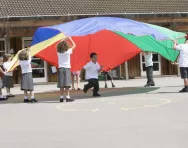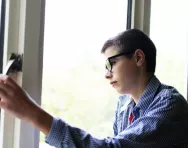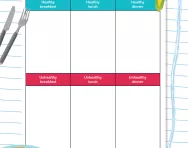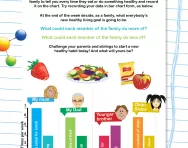Important update from TheSchoolRun
For the past 13 years, TheSchoolRun has been run by a small team of mums working from home, dedicated to providing quality educational resources to primary school parents. Unfortunately, rising supplier costs and falling revenue have made it impossible for us to continue operating, and we’ve had to make the difficult decision to close. The good news: We’ve arranged for another educational provider to take over many of our resources. These will be hosted on a new portal, where the content will be updated and expanded to support your child’s learning.
What this means for subscribers:
- Your subscription is still active, and for now, you can keep using the website as normal — just log in with your usual details to access all our articles and resources*.
- In a few months, all resources will move to the new portal. You’ll continue to have access there until your subscription ends. We’ll send you full details nearer the time.
- As a thank you for your support, we’ll also be sending you 16 primary school eBooks (worth £108.84) to download and keep.
A few changes to be aware of:
- The Learning Journey weekly email has ended, but your child’s plan will still be updated on your dashboard each Monday. Just log in to see the recommended worksheets.
- The 11+ weekly emails have now ended. We sent you all the remaining emails in the series at the end of March — please check your inbox (and spam folder) if you haven’t seen them. You can also follow the full programme here: 11+ Learning Journey.
If you have any questions, please contact us at [email protected]. Thank you for being part of our journey it’s been a privilege to support your family’s learning.
*If you need to reset your password, it will still work as usual. Please check your spam folder if the reset email doesn’t appear in your inbox.
What to do if your child has flu
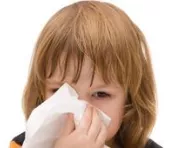
When you have a primary school child, it can sometimes seem as if they’re never 100 per cent well.
Coughs, colds and other bugs spread quickly through schools, and while they can be inconvenient and uncomfortable, children usually bounce back.
Flu, however, is more serious and can knock off your child off their feet. In the most severe cases, it can even be life-threatening.


Download fantastic science resources today!
- Experiments And Science Fun pack
- Science Learning Programme for each school year
- All the instructions, questions and information you need
What are the symptoms of flu?
Flu has many of the same symptoms as the common cold, but they’re more severe. These include:
- a sudden temperature of 38C or over.
- aches and pains.
- exhaustion and difficulty sleeping.
- dry, chesty cough.
- sore throat.
- headache.
- loss of appetite.
- tummy pain, diarrhoea, nausea and/or vomiting.
Unlike a cold, the symptoms of flu come on quickly, over the course of a few hours. It also makes you feel too unwell to carry on with your normal daily activities.
What are the different strains of flu?
Every few years, we hear about new and supposedly deadly strains of flu, such as swine flu, bird flu and Australian flu.
While these unfamiliar names can cause widespread panic, it’s important to note that every year, a number of different strains of flu circulate.
In fact, the majority are classed as influenza type A – the most common type of flu virus – and should all be treated in the same way.
What to do if your child has flu
Flu is usually treatable at home. Because it’s a virus, antibiotics aren’t effective, so there’s no need to take your child to the doctor.
You can help your child by:
- letting them rest and sleep as much as they need.
- keeping them warm.
- giving them children’s paracetamol and/or ibuprofen, always following the instructions on the package.
- giving them plenty of fluids to prevent dehydration.
With rest and TLC, your child should start to feel better in about a week.
When to seek medical help
Although flu is unpleasant, most children will make a full recovery within a couple of weeks – whichever strain they have. Some, however, are at greater risk of complications. These include bronchitis, pneumonia and ear infections.
If your child has a long-term health condition like asthma, diabetes, kidney or heart problems, or has a weakened immune system (for example, if they’re taking immune suppressing medication), you should see your GP.
You should also take them to the doctor if they’re no better after seven days, or if you are worried about them. In particular, you should seek urgent medical attention from your GP, NHS 111, or your local A&E if your child:
- is unresponsive, unconscious, floppy, limp or difficult to wake.
- is struggling with their breathing so much that they can’t finish a sentence.
- is unable to swallow or is drooling excessively.
- looks blue or grey, particularly around the mouth.
- has a seizure.
- develops sudden chest pain.
- coughs up blood.
It’s also vital to look out for the signs of sepsis.
Will the flu vaccine prevent flu?
The nasal flu vaccine is currently offered to all children aged two to Year 6, and those who are at higher risk of complications. School-age children are usually given it at school in the autumn. It will eventually be rolled out to all children.
Because there are different strains of flu every year, the vaccine doesn’t completely eliminate the risk of your child getting flu. However, it significantly reduces the risk of flu, and can make it clear up faster if your child does catch it.
How to avoid spreading flu
Flu is spread through coughing and sneezing, so you can reduce the chances of your child catching flu by keeping them away from other infected adults or children.
Wash your hands and theirs regularly, as the virus can survive on hands and surfaces for 24 hours.
Encourage them to use tissues to cover their nose and mouth when they cough or sneeze, and throw them away afterwards.
If they have flu symptoms, keep them off school until they’re feeling better.

